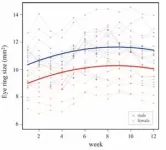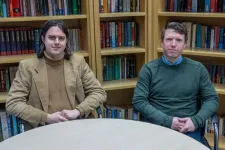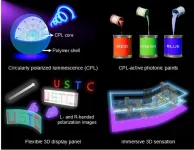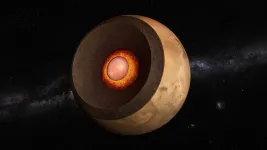(Press-News.org) A new study explores themes in Twitter discussions of deepfake videos related to the Russian invasion of Ukraine, highlighting the potential for real videos to be mistaken for deepfakes and for deepfakes to fuel conspiracy theories. John Twomey of University College Cork, Ireland, and colleagues present these findings in the open-access journal PLOS ONE on October 25, 2023.
Created using artificial intelligence, deepfake videos typically feature a person saying and doing things they never actually did in real life. Deepfake technology has advanced considerably, sparking concerns about its potential harms. Deepfakes related to the Russian invasion of Ukraine represent the first instances in which deepfakes have been used in attempts to influence a war.
To better understand the potential harms of deepfakes, Twomey and colleagues analyzed Twitter discussions about deepfakes related to the invasion. They used a qualitative approach known as thematic analysis to identify and understand patterns in the discussions, which included a total of 1,231 tweets from 2022.
The researchers found that many of the tweets expressed negative reactions to news about deepfakes. For instance, some tweets expressed worry, shock, or confusion about news related to a deepfake that falsely depicted Ukrainian President Volodymyr Zelensky surrendering to Russia. However, some tweets overlooked potential harms or had positive reactions to deepfakes directed against political rivals, especially deepfakes created as satire or entertainment.
Some tweets warned about the need to prepare for increased use of deepfakes, discussed how to detect them, or highlighted the role of the media and government in rebutting them. However, some tweets suggested that deepfakes had undermined users’ trust to the point that they no longer trusted any footage of the invasion. Some tweets linked deepfakes to users’ apparent belief in conspiracy theories, such as deepfakes of world leaders being used as cover while they were actually in hiding, or that the entire invasion was fake, anti-Russian propaganda.
This analysis suggests that efforts to educate the public about deepfakes may unintentionally undermine trust in real videos. The authors note that their findings and future research could help inform efforts to mitigate the harms of deepfakes.
The authors add: “Much previous research on deepfakes has been concerned with potential future harms of the technology. However we have focused on how deepfakes are already impacting social media as we have seen during Russia's invasion of Ukraine. Our research shows how deepfakes are undermining faith in real media and are being used to evidence deepfake conspiracy theories.”
#####
In your coverage please use this URL to provide access to the freely available article in PLOS ONE: https://journals.plos.org/plosone/article?id=10.1371/journal.pone.0291668
Citation: Twomey J, Ching D, Aylett MP, Quayle M, Linehan C, Murphy G (2023) Do deepfake videos undermine our epistemic trust? A thematic analysis of tweets that discuss deepfakes in the Russian invasion of Ukraine. PLoS ONE 18(10): e0291668. https://doi.org/10.1371/journal.pone.0291668
Author Countries: Ireland, UK, South Africa
Funding: This work was supported with the financial support of the Science Foundation Ireland grant 13/RC/2094_2 and co-funded under the European Regional Development Fund through the Southern & Eastern Regional Operational Programme to Lero - the Science Foundation Ireland Research Centre for Software (www.lero.ie, Award PP5004). These groups had no role in study design, data collection and analysis, decision to publish, or preparation of the manuscript.
END
Deepfake videos during Russian invasion of Ukraine could undermine trust
Thematic analysis of 2022 tweets highlights impacts of wartime deepfakes on emotions, trust, and conspiracy theories
2023-10-25
ELSE PRESS RELEASES FROM THIS DATE:
In Prehispanic Cancun, immigrants were treated just like Maya locals
2023-10-25
Ancient people immigrated to Cancun Island and were treated just like locals, according to a study published October 25, 2023 in the open-access journal PLOS ONE by Andrea Cucina of the Autonomous University of Yucatan, Mexico and colleagues.
The Late Postclassic (AD 1200-1500) in the northern Maya lowlands was a period of major changes, including the development of many settlements along the east coast of the Yucatan Peninsula, influenced in part by expanded trade routes. Previous research has found that these settlements were home to many non-local individuals, but it remains unclear whether these people were treated as “foreigners” ...
Climate change likely impacted human populations in the Neolithic and Bronze Age
2023-10-25
Human populations in Neolithic Europe fluctuated with changing climates, according to a study published October 25, 2023 in the open-access journal PLOS ONE by Ralph Großmann of Kiel University, Germany and colleagues.
The archaeological record is a valuable resource for exploring the relationship between humans and the environment, particularly how each is affected by the other. In this study, researchers examined Central European regions rich in archaeological remains and geologic sources of climate data, using these resources to identify correlations between human population trends and climate change.
The ...
First ever study of wartime deepfakes reveals their impact on news media
2023-10-25
A first ever study of wartime deepfake videos reveals their impact on news media and outlines implications for social media companies, media organisations and governments.
Deepfakes are artificially manipulated audio-visual material. Most deepfake videos involve the production of a fake ‘face’ constructed by Artificial Intelligence, that is merged with an authentic video, in order to create a video of an event that never really took place. Although fake, they can look convincing and are often produced to imitate or mimic an individual.
Researchers at University ...
Anti-anxiety drug may improve brain cancer survival chances
2023-10-25
A new research study shows that cerebrospinal fluid reduces current treatment efficacy in brain cancer and identifies new therapeutic opportunities.
Cerebrospinal fluid, the clear colourless liquid that protects the brain, also may be a factor that makes brain cancers resistant to treatment, Australian researchers led by Associate Professor Cedric Bardy at the South Austraila Health and Medical Research Institute (SAHMRI) and Flinders University reveal in the journal Science Advances.
Reporting how this occurs, the study in high-profile journal Science Advances shows that a decades-old anti-anxiety drug can improve the effectiveness of chemo-radiotherapy ...
Something in the eyes: Java Sparrows in love show enhanced eye rings
2023-10-25
Pair-bonded Java sparrows show enlarged eye rings to signal breeding readiness.
Birds are known for their elaborate courtship rituals and romantic gestures that are replete with beautiful songs, complex dances, gift-giving practices, preening, and flamboyant plumage. While changes in colorful external attributes during this period has attracted much attention, the role of facial features remains an under-investigated aspect of this behavior.
Associate Professor Masayo Soma and her research group at the Graduate School of Science, Hokkaido University, reported increased swelling in Java sparrows’ eye rings—an area of blushed bare skin around the eyes—upon ...
New atrial fibrillation diagnosis may increase risk of memory decline
2023-10-25
Atrial fibrillation (AF) diagnosis was associated with a 45% increased risk of mild cognitive impairment (MCI) among a cohort of 4.3 million individuals in the UK, according to a new study published in JACC: Advances. These findings suggest that cardiovascular risk factors and multiple comorbidities could further the progression from MCI to dementia in this cohort.
MCI is an early stage of cognitive function decline. In some cases it can be reversed, but it can indicate development of early dementia-associated disease. There has not been sufficient research on the development of MCI in AF patients and the subsequent development of dementia, so the authors of this study sought to ...
Printable circularly polarized luminescence materials enables flexible, stereoscopic displaying
2023-10-25
Flexible three-dimensional (3D) displays drive innovation in the next-generation display technology, as they allow for the creation of versatile and adaptable displays that can be easily manipulated and customized to fit various viewing scenarios.
Printing circularly polarized luminescence (CPL, generated by the intrinsic chirality of luminescent materials) materials on moving, deformable and free-form surfaces serves to fabricate large-scale and high-performance integral imaging 3D displays: CPL provides a helping hand using its unusual optical rotation characteristics to achieve considerable contrast ratio and wide viewing angle.
Scientists led by Professor ...
Zika infection in pregnant macaques slows fetal growth
2023-10-25
Zika virus infection in pregnant rhesus macaques slows fetal growth and affects how infants and mothers interact in the first month of life, according to a new study from researchers at the California National Primate Research Center at the University of California, Davis. The work, published Oct. 25 in Science Translational Medicine, has implications for both humans exposed to Zika virus and for other viruses that can cross the placenta, including SARS-CoV2, responsible for the COVID-19 pandemic.
“Initially I thought this was a story about Zika, but as I looked at the results I think this is also a story about ...
Chloroplasts do more than photosynthesis: They’re also a key player in plant immunity
2023-10-25
Scientists have long known that chloroplasts help plants turn the sun’s energy into food, but a new study, led by plant biologists at the University of California, Davis, shows that they are also essential for plant immunity to viral and bacterial pathogens.
Chloroplasts are generally spherical, but a small percentage of them change their shape and send out tube-like projections called “stromules.” First observed over a century ago, the biological function of stromules has remained ...
Mystery of the Martian core solved
2023-10-25
For four years, NASA’s InSight lander recorded tremors on Mars with its seismometer. Researchers at ETH Zurich collected and analysed the data transmitted to Earth to determine the planet’s internal structure. “Although the mission ended in December 2022, we’ve now discovered something very interesting,” says Amir Khan, a Senior Scientist in the Department of Earth Sciences at ETH Zurich.
An analysis of recorded marsquakes, combined with computer simulations, paint ...
LAST 30 PRESS RELEASES:
Menopausal hormone therapy may not pose breast cancer risk for women with BRCA mutations
Mobile health tool may improve quality of life for adolescent and young adult breast cancer survivors
Acupuncture may help improve perceived breast cancer-related cognitive difficulties over usual care
Nerve block may reduce opioid use in infants undergoing cleft palate surgery
CRISPR primes goldenberry for fruit bowl fame
Mass General Brigham announces new AI company to accelerate clinical trial screening and patient recruitment
Fat tissue around the heart may contribute to greater heart injury after a heart attack
Jeonbuk National University researcher proposes a proposing a two-stage decision-making framework of lithium governance in Latin America
Chromatin accessibility maps reveal how stem cells drive myelodysplastic progression
Cartilaginous cells regulate growth and blood vessel formation in bones
Plant hormone allows lifelong control of proteins in living animal for first time
Swedish freshwater bacteria give new insights into bacterial evolution
Global measures consistently underestimate food insecurity; one in five who suffer from hunger may go uncounted
Hidden patterns of isolation and segregation found in all American cities
FDA drug trials exclude a widening slice of Americans
Sea reptile’s tooth shows that mosasaurs could live in freshwater
Pure bred: New stem cell medium only has canine components
Largest study of its kind highlights benefits – and risks – of plant-based diets in children
Synergistic effects of single-crystal HfB2 nanorods: Simultaneous enhancement of mechanical properties and ablation resistance
Mysterious X-ray variability of the strongly magnetized neutron star NGC 7793 P13
The key to increasing patients’ advance care medical planning may be automatic patient outreach
Palaeontology: Ancient tooth suggests ocean predator could hunt in rivers
Polar bears may be adapting to survive warmer climates, says study
Canadian wildfire smoke worsened pediatric asthma in US Northeast: UVM study
New UBCO research challenges traditional teen suicide prevention models
Diversity language in US medical research agency grants declined 25% since 2024
Concern over growing use of AI chatbots to stave off loneliness
Biomedical authors often call a reference “recent” — even when it is decades old, analysis shows
The Lancet: New single dose oral treatment for gonorrhoea effectively combats drug-resistant infections, trial finds
Proton therapy shows survival benefit in Phase III trial for patients with head and neck cancers
[Press-News.org] Deepfake videos during Russian invasion of Ukraine could undermine trustThematic analysis of 2022 tweets highlights impacts of wartime deepfakes on emotions, trust, and conspiracy theories










